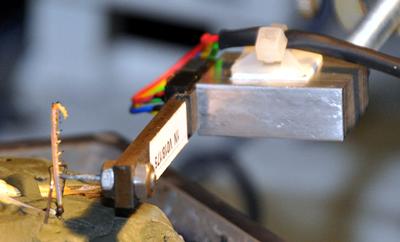Research project: Muscle models with applications
How can we improve existing muscle models and use these to detect the effect of therapies, medicines, and any other external factor on muscle performances?
How can we improve existing muscle models and use these to detect the effect of therapies, medicines, and any other external factor on muscle performances?
Improvements in medicine mean that the average population age is increasing. As a consequence there is an increase in age-related muscle degeneration, costing over $18.5 billion in the US alone. In addition to aging, vibration exposure, such as from the use of heavy hand held machinery, also leads to muscle damage. Currently there are many contradictions in the literature concerning the effects of vibration and the treatment of muscular degeneration has only seen limited success.
The aim of this project is to understand how muscle function and structure declines with age, and the impact of vibration on muscle performance. Here we use an insect, the African Desert Locust, as a model organism to begin to understand these processes.
Substantial portions of the human population, including pregnant women, have vitamin D levels at the lower end of the measureable range. The fetus is dependent on maternal vitamin D (i.e. crossing the placenta) and vitamin D has been linked to muscle development. Recent data links a deficiency in fetal plasma vitamin D to impaired fetal skeletal muscle structure. The project examines the mechanistic link between reduced pregnancy vitamin D (due to dietary deficiency or maternal adiposity) and skeletal muscle development and adult function.
The project is multi-disciplinary drawing upon the expertise of established teams of researchers from the Institute of Developmental Sciences (Faculty of Medicine), The Centre for Biological Sciences (Faculty of Natural and Environmental Sciences) and The Institute of Sound and Vibration Research (Faculty of Engineering and the Environment).

Muscle models can provide an important step in improving our understanding of neuromuscular systems. Models that integrate motor-neural activation, muscles and body limb mechanics are useful for studying movement control. A good muscle model can also assist in the development of devices to restore function after injury. The specific aim of this project is to develop a mathematical model of the locust hind leg extensor muscle. The model accounts for the force response of the muscle due to individual stimuli under isometric (constant length) conditions.

The project aims at developing an in vivo method to estimate musculotendon parameters. Firstly a musculoskeletal model of wrist flexors and extensors comprising musculoskeletal dynamics and limb anatomy was validated experimentally with healthy subjects during maximum voluntary contractions. Secondly electromyography signals from flexors and extensors were used as input, while measured torques exerted by the hand were compared to the torques predicted by the model. In total, six subject-specific musculoskeletal parameters were estimated, while biomechanical indexes such as the muscle operating range, the stiffness of the musculotendon actuators, and the contribution of the muscle fibers to the joint moment were computed. The model is able to simulate the measured torques with values of root mean square error comparable to those calculated during the estimation phase.